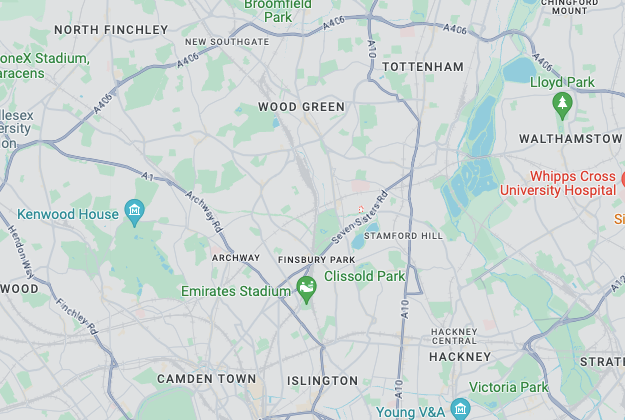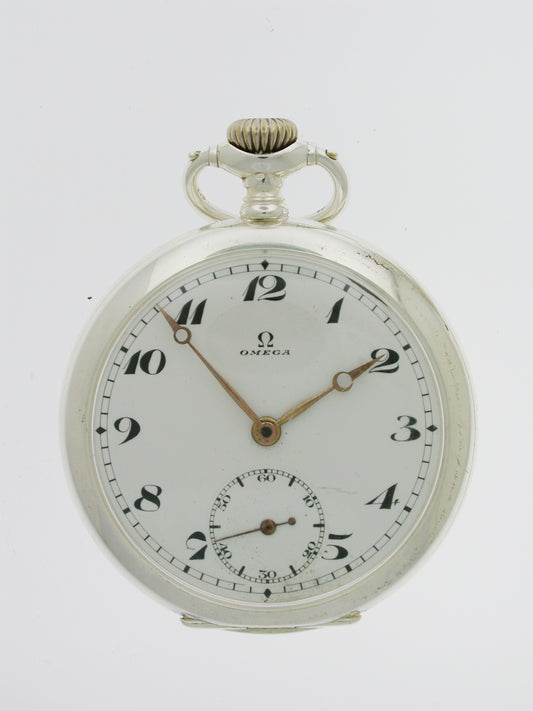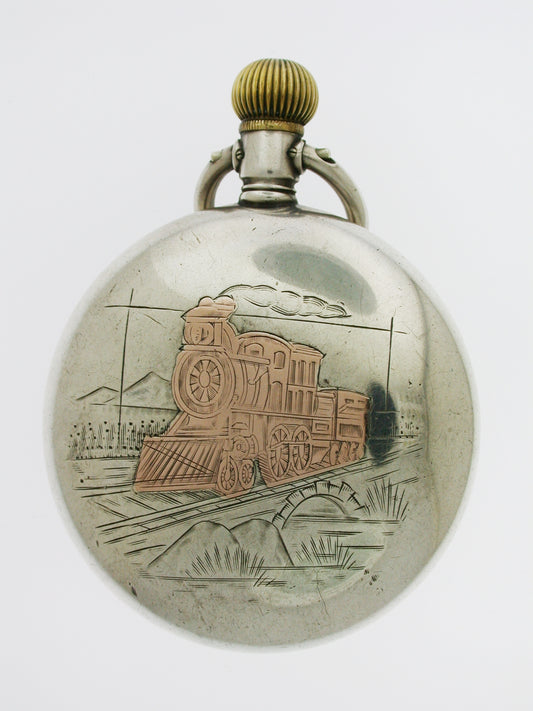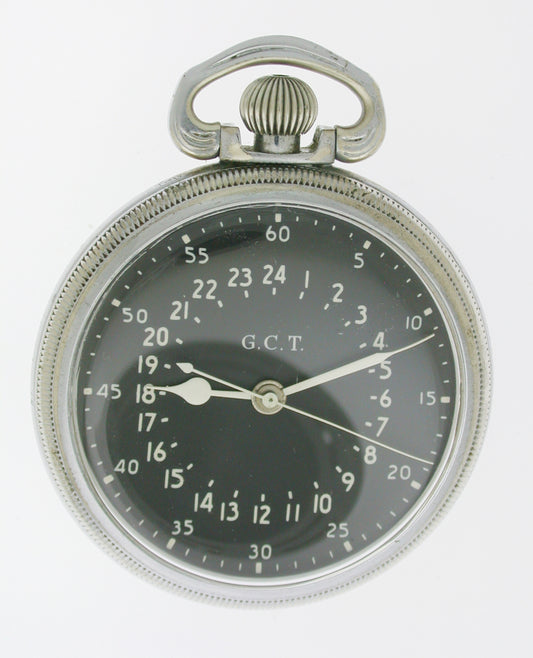Buy Antique Watches London
Purchase antique watches online with Euro Antique Watches. As experts in the field since 1985, we would be delighted to assist you in acquiring the most carefully sourced antique old pocket watches and chains today.
So if you are looking to buy the most prestigious pockets watches, for instance a 18Kt Yellow Gold Pocket Watch or a British Military Pocket Watch, then browse our products to purchase an antique watch today!
What Makes A Watch Antique?
-
Age
A watch usually needs to be at least 100 years old to be consider antique. This distinguishes it from vintage watches, which are typically 20 to 50 years old.
-
Rarity
Antique watches are often rare because they were produced in limited quantities or because few have survived over the years. They may have unique design features, complications or craftsmanship that are no longer common in modern watchmaking.
-
Craftsmanship
Antique watches often feature handmade components and intricate details. This reflects the high level of craftsmanship of their time.
-
Historical Significance
The history or previous ownership of the watch can add to its value and significance. Watches with a well-documented provenance or association with historical figures are highly prized.
-
Design & Style
Antique watches reflect the design aesthetics of their time, such as Art Deco, Art Nouveau or Georgian styles. They may feature distinctive artistic elements, such as elaborate engravings or unusual shapes.
-
Brand & Maker
Watches made by renowned watchmakers or reputable brands with a long history of excellence are more likely to be considered antiques. Models that represent a significant part of a brand’s history are particularly valuable.
-
Condition
Watches that have been well-preserved in their original condition, with minimal restoration, are more desirable as antiques. While it is common for antique watches to require some maintenance, those that are still in working order are particularly valued.
-
Quality
Antique watches may be made from high quality materials like gold, silver or enamel. They also may feature precious stones or hand-painted dials.
-
Era
Antique watches often come from specific historical periods. Examples include the Victorian era (1837-1901) or the Edwardian era (1901-1910).

How To Set The Time On An Antique Pocket Watch
To set the time on an antique pocket watch, carefully pull the crown (the small knob on the top or side of the watch) to the setting position. Turn the crown slowly in either direction until the hands point to the correct time. Once set, push the crown back to its original position so that the watch can start running again.

Can You Help With Insurance?
Yes, we can assist you with insurance for your antique watch. Our experts can provide guidance on how to obtain the right coverage to protect your valuable timepiece. We can recommend reputable insurance providers so that your watch is adequately insured against loss, theft and damage.

Who Buys Antique Pocket Watches?
Collectors and antique dealers are the main buyers of antique pocket watches. These individuals appreciate the historical significance, craftsmanship and unique designs of vintage timepieces.
Additionally, investors often purchase antique pocket watches since they are valuable assets that can appreciate over time. If you are looking to purchase a pocket watch and have any queries, then do not hesitate to get in touch with Euro Antique Watches by emailing leslie2626@gmail.com or by calling +44 (0)7816 644 544. We would be delighted to assist you today!
How To Identify Antique Pocket Watches
-
Step 1 - Examine the Watch's Case & Movement
- Carefully open the pocket watch case to examine the inner workings. Look for any markings or engravings on the case and movement.
- Look for any hallmarks, maker's marks or serial numbers. These markings can indicate the manufacturer, origin and approximate date of production.
- Determine the material of the case, such as gold or silver.
-
Step 2: Research the Manufacturer & Serial Number
- Use the markings and engravings to identify the watchmaker or brand.
- Use online databases or reference books to look up the serial number found on the movement. This can help you to determine the production date and model of the watch.
- Refer to watch collectors’ guides, historical catalogues and expert forums to gather more information about the specific manufacturer and model.
-
Step 3: Analyse the Design & Features
- Examine the design of the dial and hands. Look for characteristics such as Roman numerals, enamel dials or specific hand shapes.
- Look for any additional features such as a chronograph or a second-hand sub-dial. This can provide clues about the watch's age and rarity.
- Compare your watch to known models from the same manufacturer and period. Pay attention to design elements and craftsmanship.

What Areas Do You Cover?
Euro Antique Watches is based in London but sells pocket watches and chains across the whole of the UK. You can purchase antique watches in many areas, including Manchester, Liverpool, Birmingham, Bournemouth, Brighton, Kent, Essex, Leicester, Nottingham, Oxford, Cambridge, Leeds, Suffolk, Norwich, Hull, Warwick and Wales to name a few.
Browse Our Latest Items
-
Original 0.800 Omega Silver Pocket Watch Circa 1918
Regular price £280.00Regular priceUnit price / per -
Silver Omega Railway Pocket Watch C1918
Regular price £400.00Regular priceUnit price / per -
Omega Steel Pocket Watch Circa 1914
Regular price £290.00Regular priceUnit price / per -
Military Antique Hamilton US Government Pocket Watch 24 Hour - 4992B G.C.T. - USA 1942
Regular price £600.00Regular priceUnit price / per




